10 Apr 2024
05m
Every now and then a meal becomes more than just a meal. It could be innovative and exciting – the kind that shapes your cooking going forward. But there’s something equally magic about the dish your mum used to cook you growing up, or even the reliable weekly staple you knock together on repeat.
In this new series, Time’s Table, we chat to people about the food that has left an impact on a time in their life – be it their past, present or future. Trust us, you can learn a lot about someone through what’s on their plate.
Time’s Table with… Nisha Katona
Nisha Katona needs no introduction. She’s a regular on our telly-boxes, starring as a judge on Great British Menu, and often popping up on the likes of This Morning and Sunday Brunch. But the MBE-awarded chef is undoubtedly best known for her hugely successful Indian restaurant chain, Mowgli Street Food, with over 20 branches across the UK.
Mowgli came to Nisha after 20 years working as a barrister, and the leap of faith she took into a brand new industry is a pretty good reflection of what she’s all about.
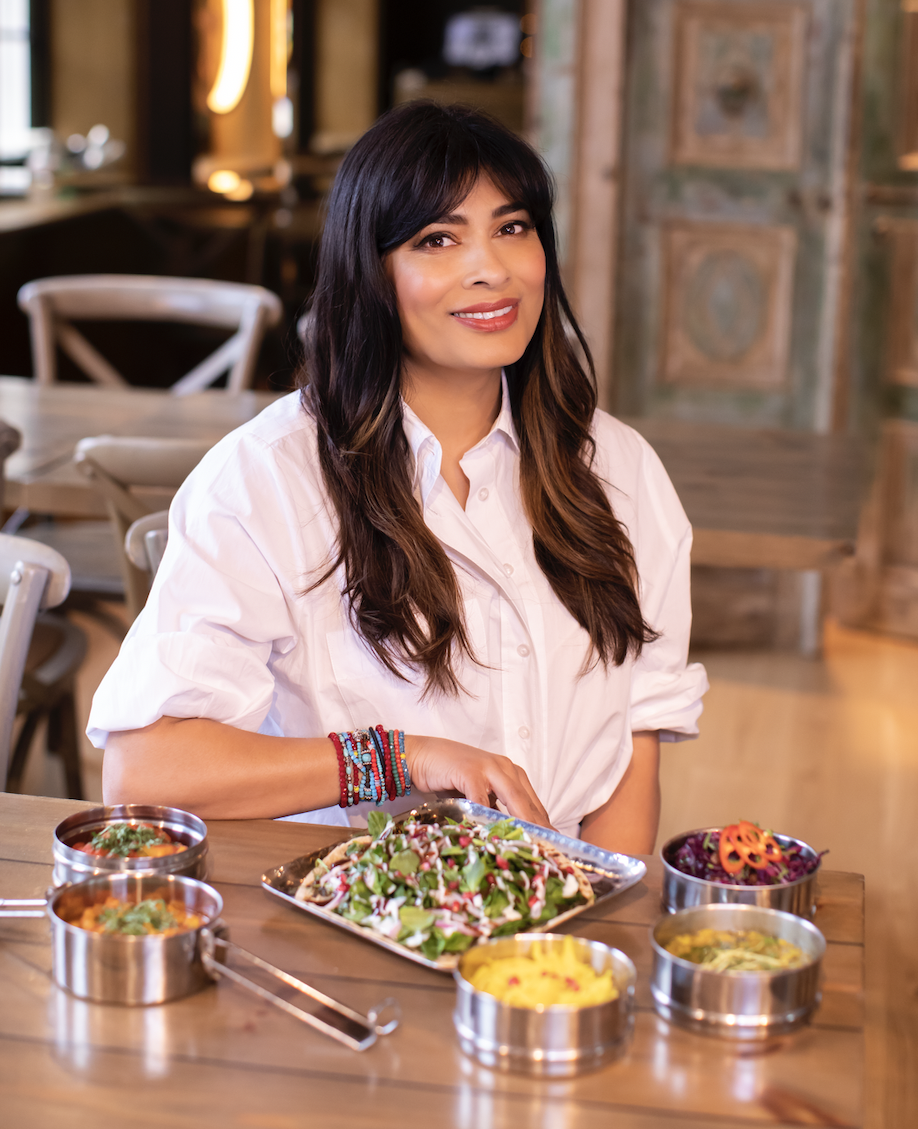
Serving the likes of Himalayan Cheese Toast and Treacle Tamarind Fries, like her, the menu is brave, fun, and sometimes audacious – making no bones about the fact it’s more than a traditional curry house offering.
Indeed, Nisha’s recipes more broadly are anything but generic. With influences that range from her family’s roots in India to her Lancashire hometown to the Sichuan province of China, you only have to have flicked through one of her books or seen her on GBM to know the passion she has for global flavours and techniques is palpable.
This is something that is particularly reflected in her aptly named newest cookbook, Bold, the sixth from the restaurateur, following the likes of Pimp My Rice and Meat Free Mowgli.
It aims to showcase the inventive and often whacky dishes that can come when you combine a knowledge of balancing flavours and a willingness to fearlessly play around (chicken and banana korma, we’re looking at you).
But where did Nisha develop such a magic formula? We asked her to pick a nostalgic dish from her past, a present staple, and a recent inspiration, to dig a little deeper.
Past - Hyderabadi chicken curry and fried puri bread
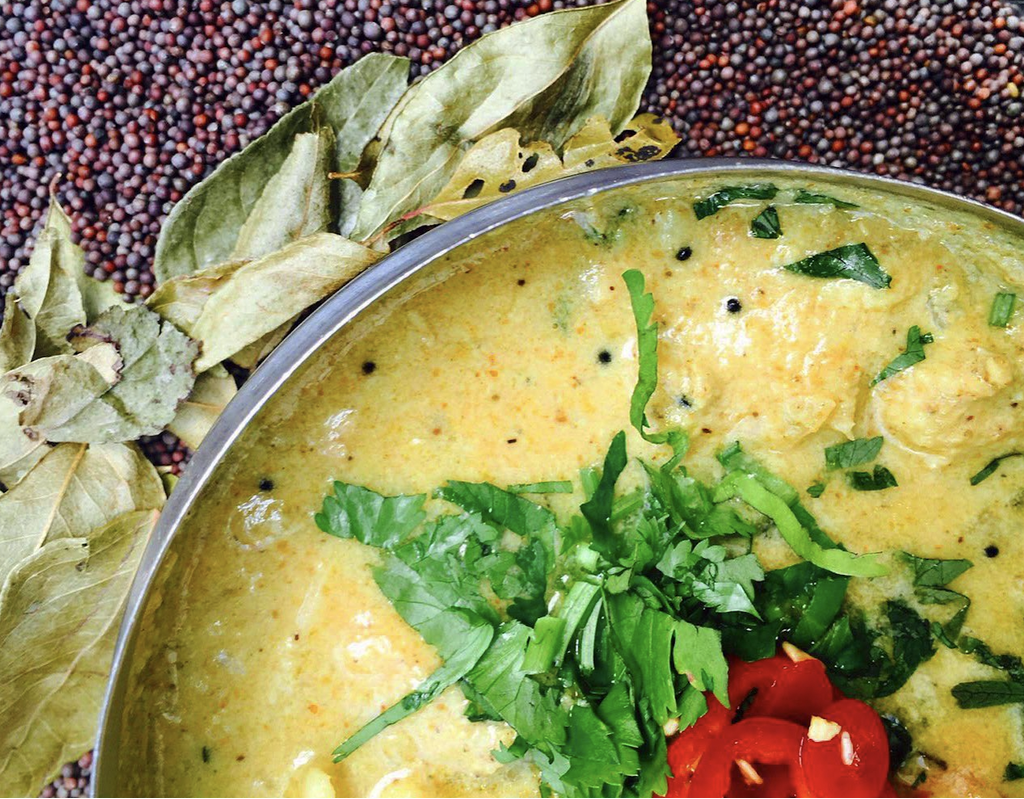
“The table in our family home was quite a lonely place because people didn't want to come and eat our food. It was a place of embarrassment for me and my brother.
“I was born and raised in Lancashire at a time when there were no Indians. My parents were both doctors who were originally Bengali. So, my earliest memories were of the most horrendous racism – of bricks being thrown through windows, being stoned in the street, spat at in the street.
“It was in the days of Mind Your Language and these really racist, terrifying television programmes. So, we were seen as these…well, animals, really, who ate strange foods.
“You were laughed at because people thought you smelt of curry. People thought because you were different… because you were brown, that this was something filthy and foreign.
“But then things slowly started to shift, and people began to get a taste for our food. About ten years later, I'm not kidding you, it was like an open house, with people coming to see what my mother had cooked from things that she'd grown in the garden.
“You knew loads of people were going to come over for dinner because you could smell two things in particular. One was these fried puri breads, cooked in ghee. They are these magical, big soft things, and they’re made with wholemeal flour and water – so simple!
“The other was Hyderabadi chicken, which is a South Indian chicken dish. The signature flavours are curry leaves and mustard seeds, which offer warmth and roundness. There’s yoghurt, which gives it a creaminess without being too heavy, and there’s coconut milk, which gives an exotic sweetness.
“The curry is special for a number of reasons. For one, we would have to travel to Manchester to buy garlic and ginger; we could only buy turmeric in chemists, where it was sold as a medicine, and curry leaves were almost impossible… you had to go to London for that.
“Even onions were hard to find. You could only buy half an onion in a bag with barley in it, alongside carrots for soup. So, when you’d smell [all these ingredients] frying, that was a really big deal, and you knew this gorgeous chicken curry was coming.
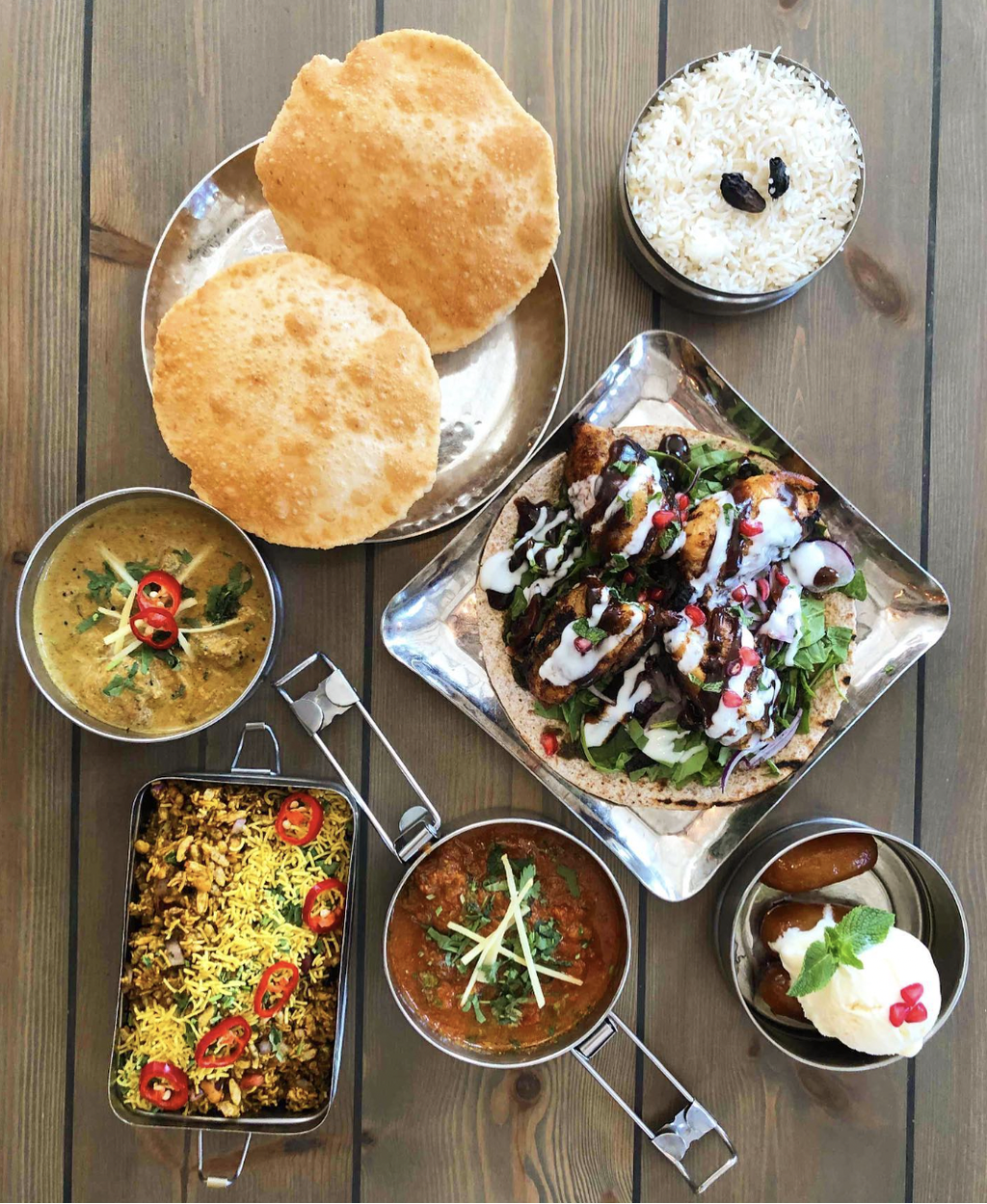
“That Hyderabadi chicken was a recipe that was given to [my mother] by a Hyderabadi friend in India back in her medical school days, and she had it written down in her little book that she’d hide behind the Warburtons bread in the cupboard.
“She didn’t tell anybody that recipe, so it's a really sacred thing that I’m very lucky to be able to [keep alive today]. Now, those two dishes are some of our biggest sellers on the Mowgli menu.
“The thing about racism or any kind of persecution is, it never leaves you. When I walk up the street to Mowgli and I can smell my food cooking, I still feel shame and embarrassment.
“But when I get into my restaurant and smell the chicken curry and the puri. I feel my heart is having a party. It takes me back to those times when as a child, I’d stick my head down the banister and realise my mum was making them!
“That chicken curry is one of the reasons I started a journey into food, because my view was, the way immigrants cook world foods is so brilliant, and these heirloom recipes deserve to stay alive because they are worthy.”
Present - Husleves
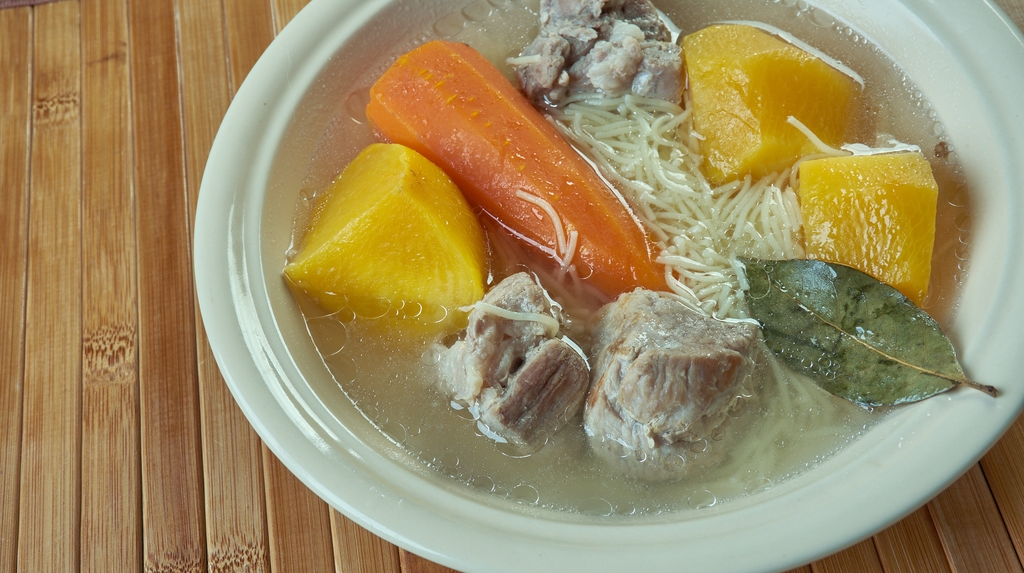
“My husband is Hungarian, and his mother is a cook, too. She goes around houses cooking this amazing Hungarian Jewish food.
“The staples that he had are so unrecognisable to the staples that I had growing up. For one, they always start every meal with a clear soup, and let me tell you, the soups in Eastern Europe are phenomenal, life-changing, and important.
“The first time [I tried them] was Christmas Eve when I went to visit and I thought ‘Are you joking?’ because I was used to big flavours. I was full of disdain! But they’re my obsession now, after 25 years of marriage. Honestly, it’s the ultimate comfort food, so clever and so underrated!
“A wonderful one I now make a lot is called Husleves. ‘Leves’ means soup, and ‘hus’ means meat, so it’s as simple as that, really. It would either be beef, chicken or turkey, on the bone.
“You start the soup with a little bit of oil in a pan, and then you put a little bit of paprika into that oil, and it emits the most extraordinary smell, as well as a rounded, delicious, mouthwatering flavour.
“You then add stock to that (or you could add water, because if you’re cooking on the bone you're gonna get those flavours through anyway).

“And here's what's so wonderful about it…there would be whole vegetables in it, so it’s like a treasure trove.
“You dip your spoon in there and then a beautiful carrot will come to the top, or a big chunk of celeriac. Then, when the soup is cooked you take all of those ingredients out and you drain them, and this clear soup remains.
“On the side, you would boil some vermicelli or some very fine noodles. They have specific soup pasta [in Hungary].
“You then take a little bit of the vegetable and put it in your soup, and always finish with fresh parsley.
“And can I tell you something really moving? It was my mother's last meal the night she passed.
“My mother-in-law was over, and my mother loved her leves. It was such a moving thing. She had this bowl of soup, she was eating the carrots and my mother-in-law was stroking her hair.
“I make the soup a lot now, and it speaks so much to me about that love that she showed my mother that day. It’s memories like that which keep a marriage strong.”
Future - Chinese fish head hotpot
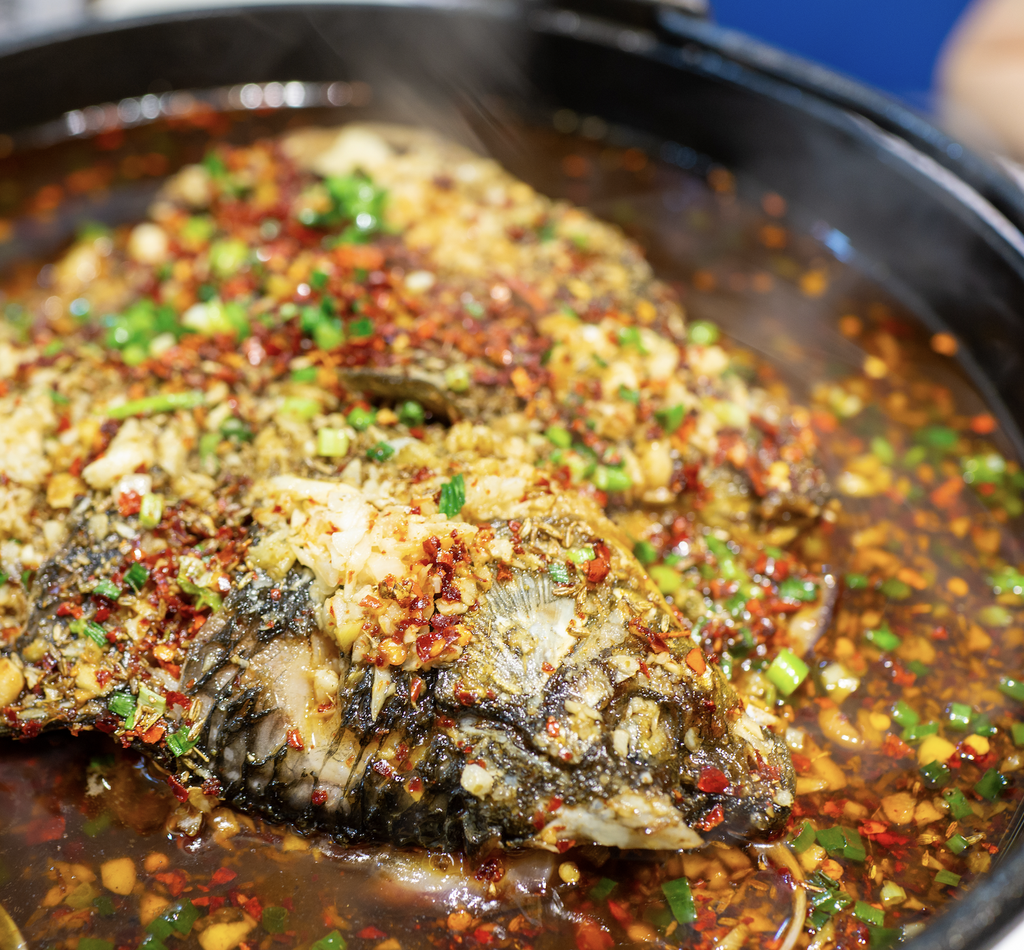
“I really do love the way that the Chinese eat hotpot. It's extremely communal. You can choose which flavour base of soup that you have, but then you get these gorgeous, fresh ingredients that you dip into it and eat.
“It’s almost as if you’re all cooking together, and I think it’s also really good to see all the ingredients you’re putting into your body.
“I had a fish head hotpot from Pang Pang in London, and it was divine. The meat on the head of the fish is so tender, and you’re also getting the stock from the bones, too.
“It’s made with Sichuan peppers, which slightly numb your tongue, but they also make it receptive and more sensitive to the other flavours, too.
“They will always have some red Chinese date in there, and they’ll always have some mushrooms. It's smoky, it's zingy, it's really meaty and umami as well. So you get a whole myriad of flavours. Then you take whatever you may want to dip in there – it might be thin slices of pork – and you dip them in for about 10 seconds.
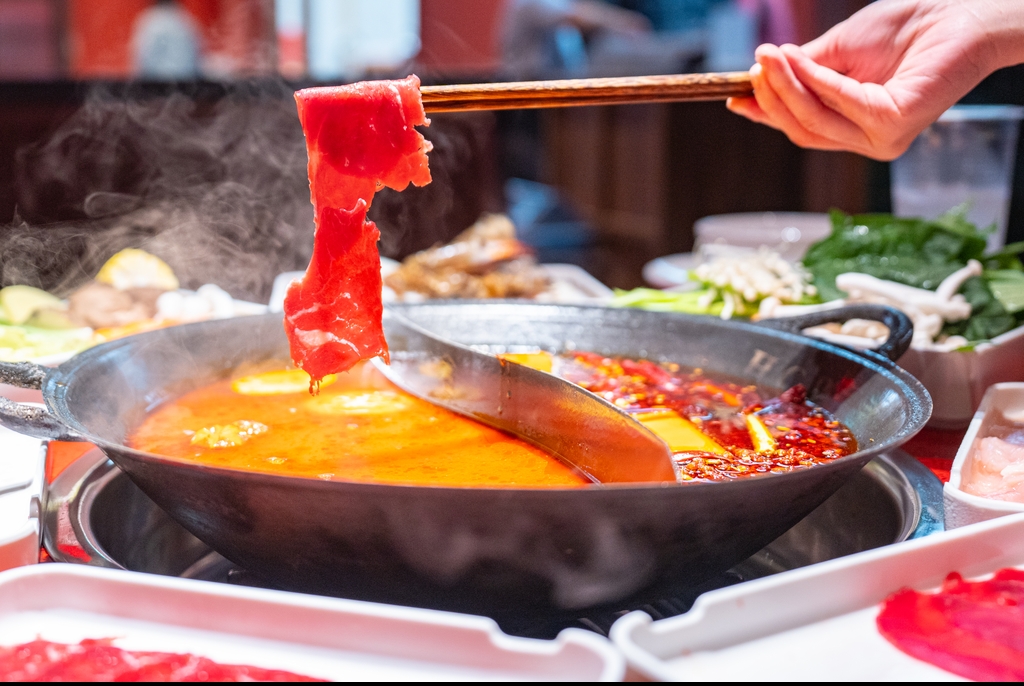
“So you’ve still got that lovely flavour of the pork that is nice and fresh, but you're also getting that slight coating of the Sichuan flavours, and I absolutely adore that.
“I went back the other day and I'm not sure I even saw the fish head on the menu and I thought ‘Oh god, that's so sad’ because people need to be brave enough to try these things! It’s what the Chinese are eating, so why are we not?!
“The majority of the world's population will eat the fish head, the cheeks, and things like that. Why do we in the West think ‘that’s below us’? It's wrong!
“So, that’s something I'm passionate about, and it might sound pretty out there, but it's true.
“I think most nations are not bold when it comes to their food. I know that my own parents wouldn't really want to eat Italian food, for example, despite all my complaining about the English not wanting to eat Indian food.
“We stayed in our lanes in the olden days, but I think it's this generation, like my children who have got dual heritage, who are bolder and are happy to try the way other nations eat.
“You see more and more hotpot restaurants popping up and it’s not just influencing me, but the way we eat in general! So it's an exciting time for the food world in that way.”
You can order Nisha Katona's new cookbook, Bold, from all good bookshops or online here.
Featured image: Nourish/ Mowgli